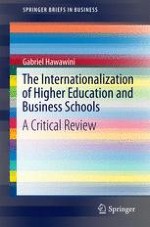2016 | OriginalPaper | Buchkapitel
6. International Richness
verfasst von : Gabriel Hawawini
Erschienen in: The Internationalization of Higher Education and Business Schools
Verlag: Springer Singapore
Aktivieren Sie unsere intelligente Suche, um passende Fachinhalte oder Patente zu finden.
Wählen Sie Textabschnitte aus um mit Künstlicher Intelligenz passenden Patente zu finden. powered by
Markieren Sie Textabschnitte, um KI-gestützt weitere passende Inhalte zu finden. powered by
